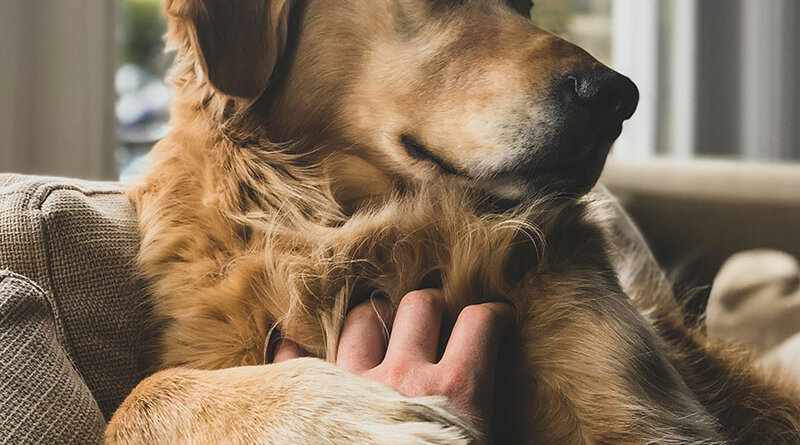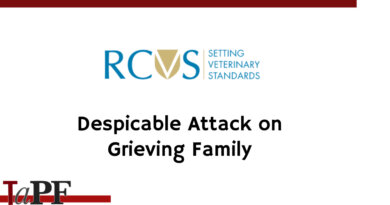The Human-Animal Bond: Easing Anxiety for Our Dogs & Ourselves
Check your smartphone, turn on the radio, turn on television and you are bombarded with warnings to “socially distance” yourself from others to slow the spread of Covid-19, a serious novel coronavirus. A more precise instruction would be to practice physical distancing. Physical distancing and hygiene are imperative to getting our lives back to a normal pace.
We know social connections are critical to our personal well-being, and the same holds true for our dogs. They, like us, are a social and cooperative species and, also like us, require social interactions. According to Matthew D. Lieberman in his book, Social, the mammalian brain “[has] evolved to experience threats to social connections the same way they experience physical pain.”
So, the capacity to feel “social pains and pleasures” is built into our neural circuitry. We cannot get around this, nor can our dogs. As Lieberman explains, it’s nature’s way of ensuring that we spend our lives motivated to maintain social connections. Our own and our animals’ well-being are contingent on social connectedness, which at this time is being threatened.
There are, however, actions we can take to ease our very rational fears.
GET THE BARK IN YOUR INBOX!
Sign up for our newsletter and stay in the know.
•Learn all you can from reputable sources. There is NO evidence our dogs can spread Covid-19. It is absolutely vital to maintain social interactions with them and with the people in our small interspecies social groups while we remain homebound.
•Design a simple weekly plan to provide a sense of control. Write it down, post it on the refrigerator and give the whole family (or roommates) something to do. Keep everyone busy and responsible for something. It might be to shop for ingredients (in-store or online), food prep for yourself and your dogs (stuffing Kongs and toys can be fun), bake some dog-safe cookies, or teach your dog some new behaviors.
•Include exercise in your weekly plan. This may include going for a hike in the woods or along the beach, walking your dog on-leash in and around the neighborhood, or taking “training walks.”
•Teach skills while you play. Bring a few tennis balls with you to a field and play catch or take it/drop it games. Find a place to sit with your dog and be still; breathe deeply while the sun (if it’s out) warms your face. The promise of spring and good things to come is in the air.
•Plan soothing indoor activities, such as grooming. Station your dog on a blanket, towel or mat and use a soft brush to smooth out his/her fur and provide a natural massage. Help your dog stay fit and flexible with a few stretches and targeted massages, or gently rub furry feet and ears.
•Get some mental exercise. This helps “grow” brain cells, reduce arousal and heart rate, and taxes us as well (thinking requires energy, which is tiring). Proactively engaging our dogs using reward-based training skills exercises their brain because this approach relies on problem-solving via the process of making choices. Behavior training is fun, engaging and will tire you both out! Suggestions to practice include working on stationary skills such as sit, down, attention or wait, or useful functional tricks like crawl, bow or shake. If you have a little more time, try some fun shaping-behavior games like stationing (go to place) or even indoor agility. Keep in mind that you and your dog are learning and bonding regardless even if you make mistakes.
•Stick to your normal routine as much as possible. A difficult but important issue to consider is that remaining indoors with your dog 24/7 may set him/her back. In order to understand the world, dogs are masters at mapping out patterns. If we usually work outside the home, our dogs have become accustomed to not seeing us as much. Maintaining a routine where you leave your house for a few hours (if you can do that safely) or work in another part of the home separated from them may be something to consider. Ideally, if you can afford to maintain a dog-walking service, this could give you a break, set up your dog for success for when things go back to a more normal routine and keep a local small business employed.
Read Part 2 of Life with Dogs During the Covid-19 Pandemic next week.





80 units of semaglutide
Wow, amazing weblog structure! How lengthy have you ever been running a blog for?
you make running a blog look easy. The full
look of your website is magnificent, as smartly as the
content material! You can see similar here najlepszy sklep